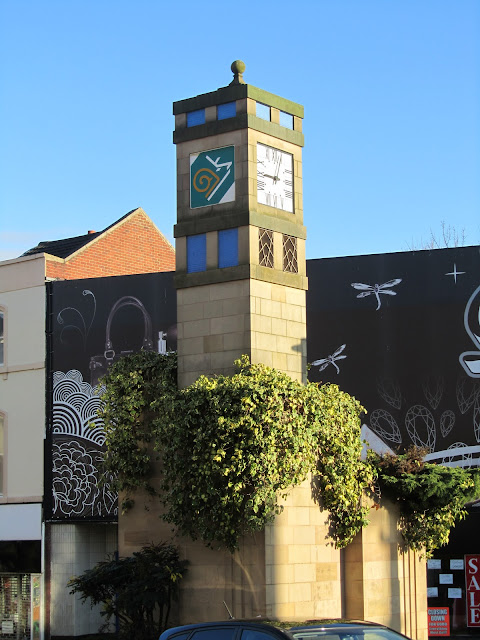One of the largest and most significant buildings at the city end of London Road is the hospital.
It began life as the Derbyshire General Infirmary in 1810, but the building was completely demolished in 1890 after an outbreak of typhoid swept through it. The design of the hospital was blamed for the rapid spread of the disease and the decision taken to begin again from scratch.
1891 saw the laying of the foundation stone of the new hospital by HM Queen Victoria, and in 1894, the Derbyshire Royal Infirmary was completed. Built in the Jacobean style, it's main features were the domed towers you can see in the photo and also the corridor which ran the length of the hospital.
Whenever I have been to the DRI, the corridor has made me smile. All doors leading onto it bear a warning in large red letters. As far as I remember, it reads:
YOU ARE ABOUT TO ENTER THE LONG CORRIDOR:
BEWARE MOVING VEHICLES
Small electric buggies would regularly trundle up and down the corridor pulling trains of food trolleys. I always imagined a perfectly healthy person stepping out from a side room and being run down by the evening meal. "How exactly did you end up covered from head to toe in fish fingers and custard, Mr Smith?"
Since its rebirth, the hospital has been expanded on a number of occasions, including the addition of a nursing accommodation tower block called Wilderslowe Tower; the city's second tallest building, and the A&E department seen in the photo.
The DRI has a couple of notable 'firsts' in its history.
1955 - First Flying Squad Ambulance service of paramedics trained to offer assistance at the scene of a medical emergency.
1976 - First National Demonstration Centre for Rehabilitation. Eventually, over 20 such centres were established by then Secretary of State, Sir Keith Joseph. They were designed to be focal points for the development of rehabilitation services, teaching principles and practices and setting standards. These centres were the forerunners of the British Society for Rehabilitation Medicine which serves doctors today.
In addition, in 1992, the Pulverton Hand Centre was opened by HM Queen Elizabeth II and, in 1999, her grandson Prince William was treated here after an injury playing rugby.
At the turn of the Millennium, the Derby hospitals merged to form the Derby Hospitals NHS Foundation Trust and plans were drawn up to develop the Derby City Hospital (in the suburb of Mickleover) into the main facility in Derby; reducing the DRI to a community hospital. In April 2010, the redeveloped and much enlarged City Hospital was opened by HM Queen Elizabeth II, with her husband the Duke of Edinburgh, and renamed the Royal Derby Hospital. The DRI became the London Road Community Hospital and now only occupies a small section of the former site.
Most of the original DRI buildings are now disused and there are plans to redevelop the site, including a proposal for an Olympic sized swimming pool and 450 new homes. Watch this space.
Opposite the hospital are these almshouses. Owned and managed by the Liversage Trust (which, dating from 1529, is Derby's oldest charity) this beautiful listed building provides housing for elderly people.




























 and his persistence!
and his persistence!






















